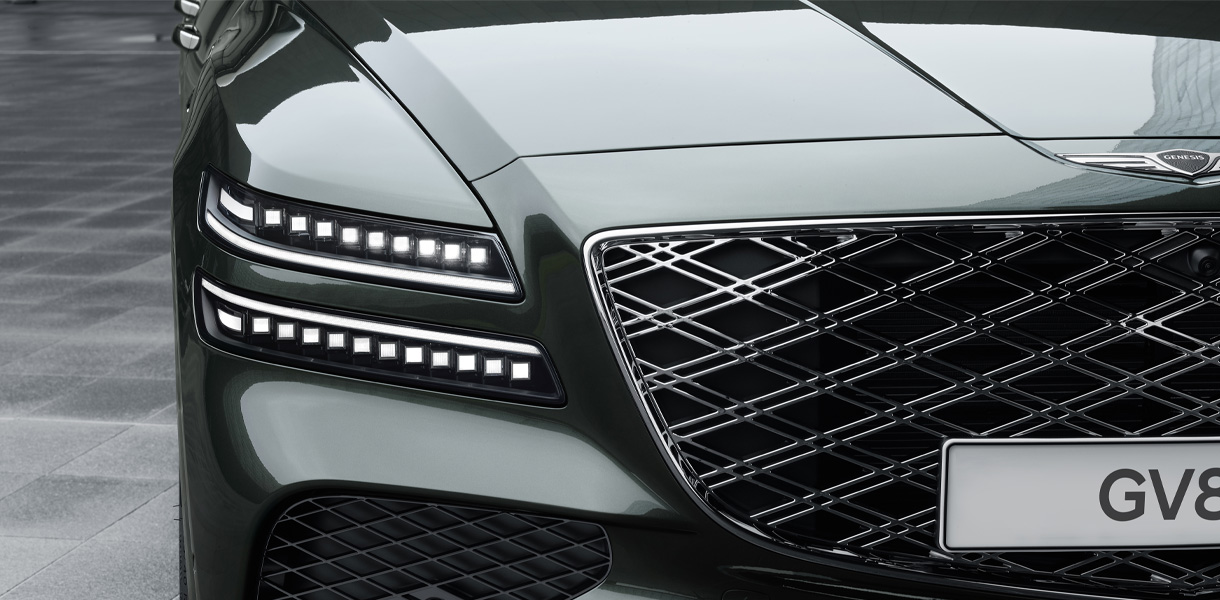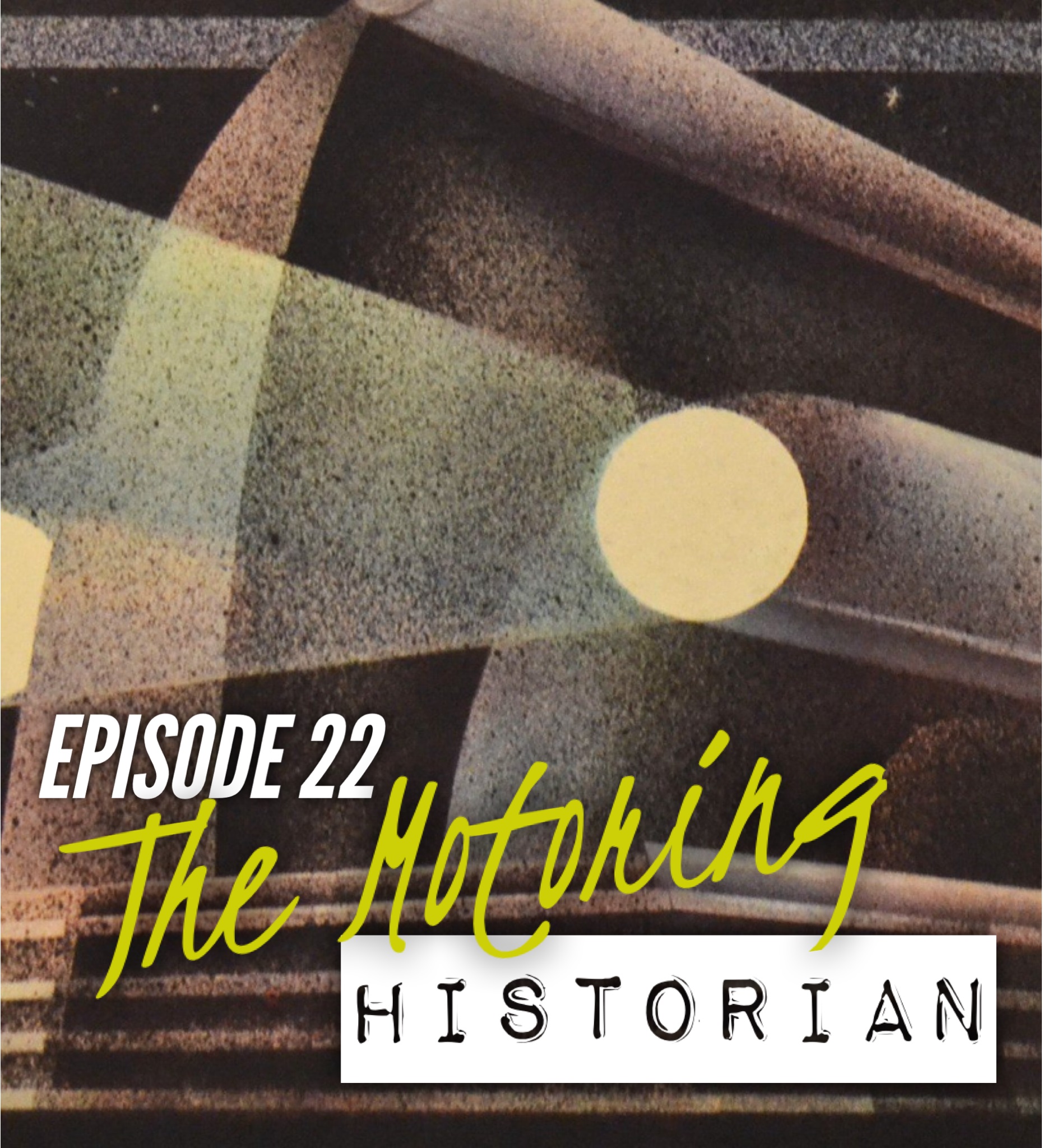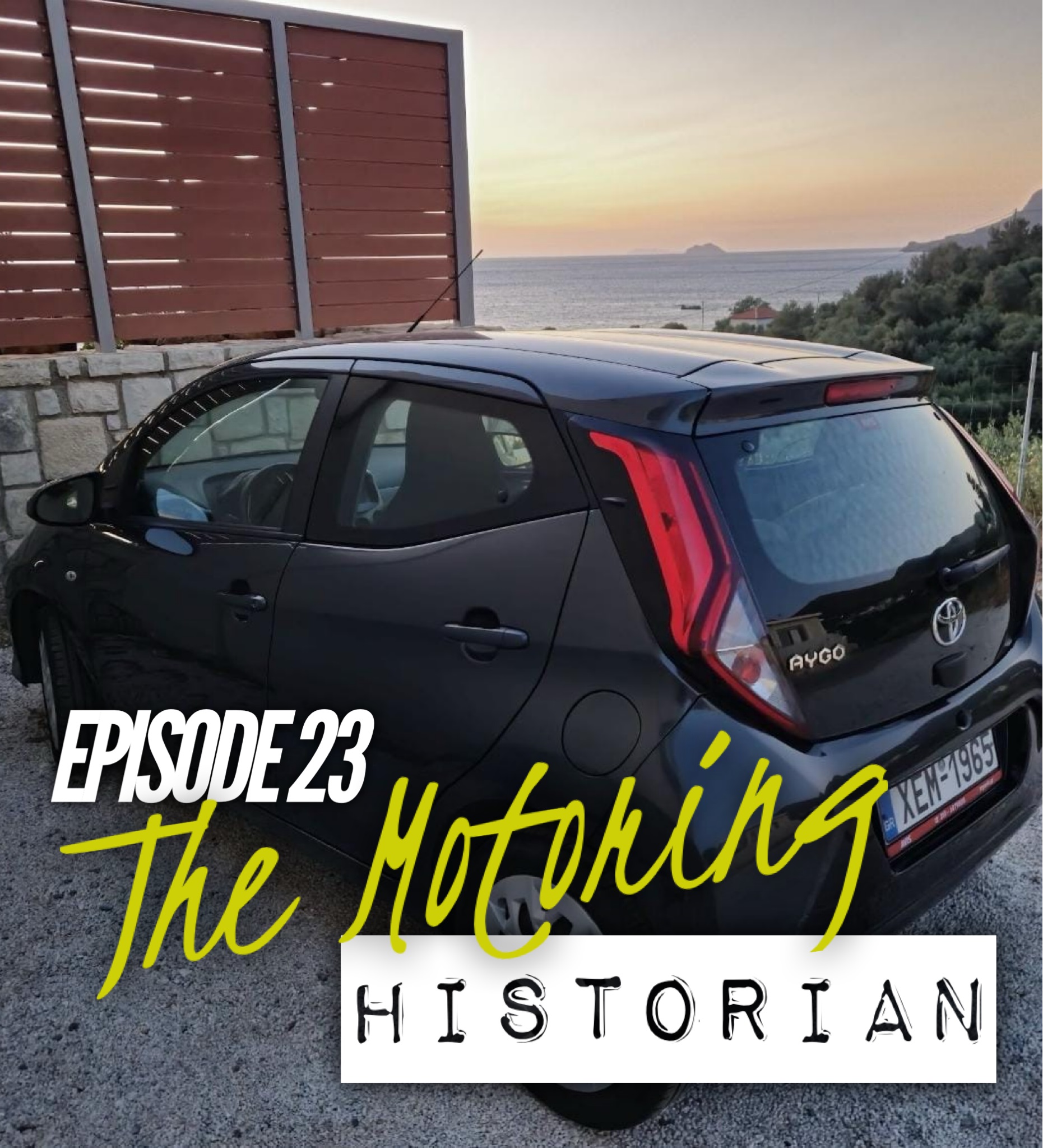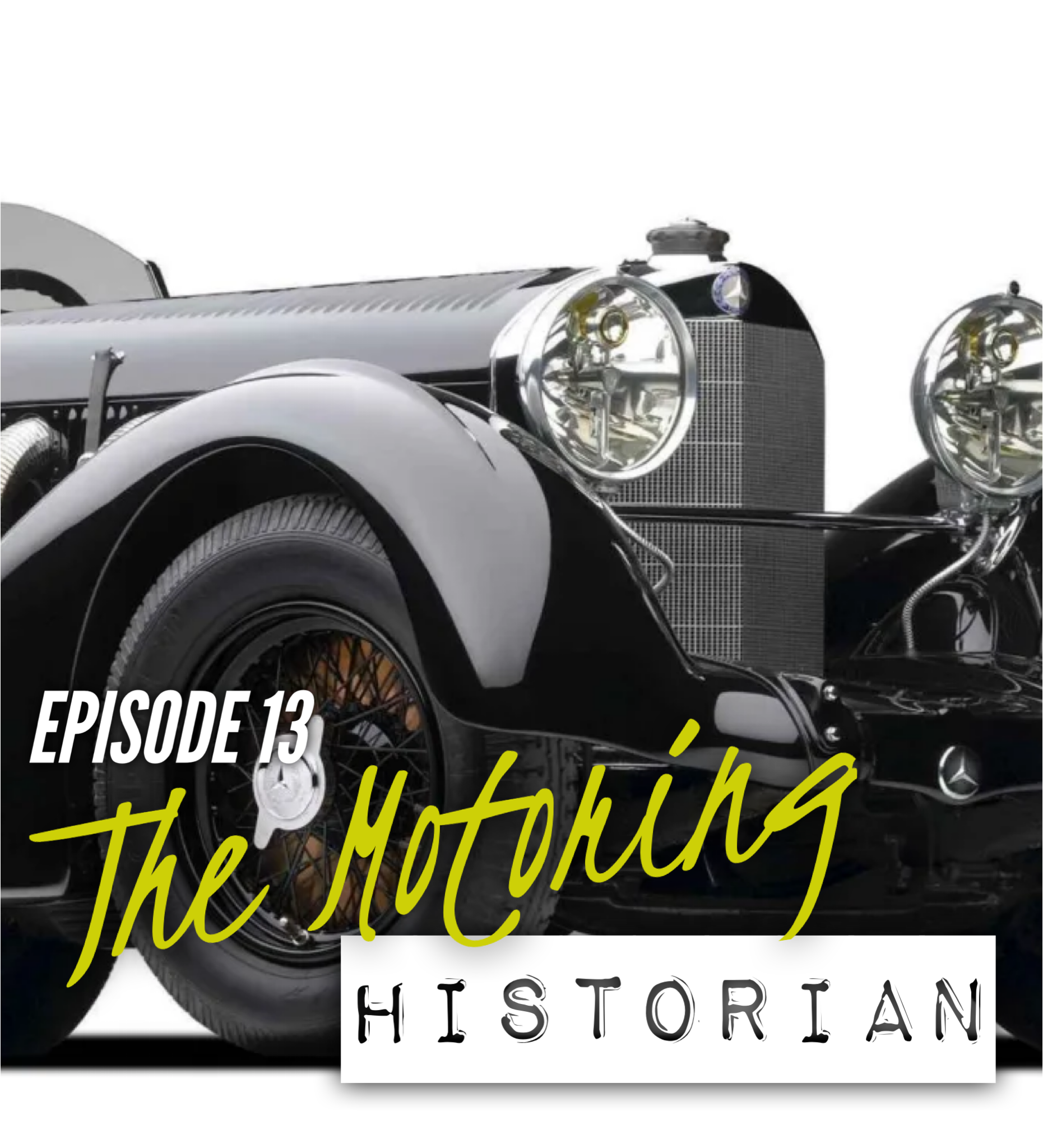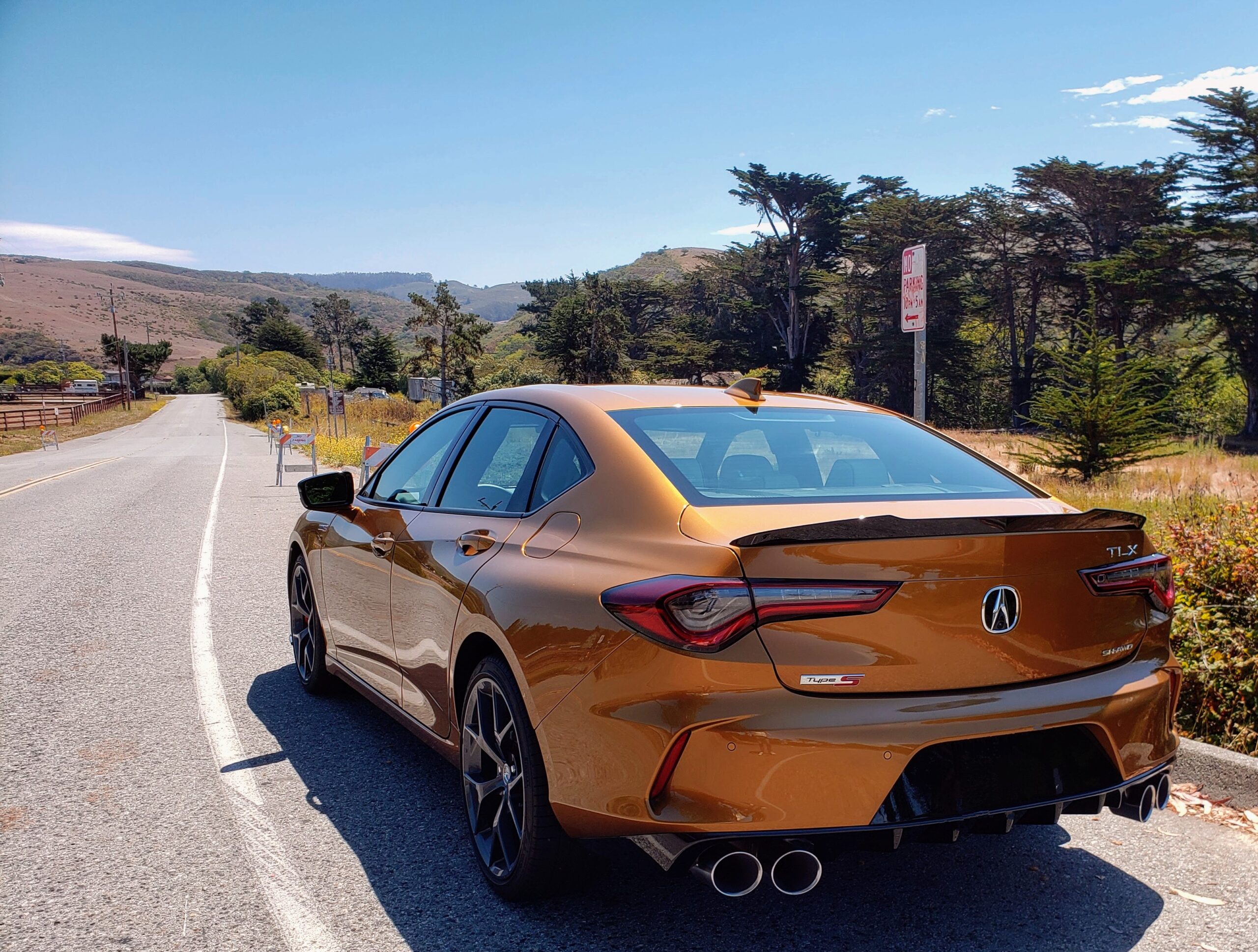Notes
Jon Summers is the Motoring Historian. He was a company car thrashing technology sales rep that turned into a fairly inept sports bike rider. On his show he gets together with various co-hosts to talk about new and old cars, driving, motorbikes, motor racing, motoring travel.
- Judas Priest – Riding On the Wind
- A digression on speed dating
- Genesis GV80 Coupe – The Car Least Likely To Make You Regret Your Car Payment, “a driver focused design”, mesh design theme J loves
- Lexus vs. Toyota, leather heated seats worth the extra $
- No creep in the transmission
- Hyundai Equus Kia K900
- New cars having different methods of starting / putting in gear. Unlike the cars we grew up with. Usually buttons “30 secs on the microwave, please”
- Testament – Electric Crown
- Genesis GV80 – “the Range Rovery one”. 17mpg instead of 13mpg for the GV80 Coupe
- Genesis G80 sedan. J’s favourite. The blobby wheels. Red leather interior. Terrific at high speed. Compares favourably with J’s old AMG Benz, a RWDV8 vs this, a AWD turbo V6. Old fashioned big fast sedan, it is a one size fits all, track day or airport limo.
- Genesis Sport vs. Sport+ settings
- Judas Priest – Riding On The Wind
Transcript
[00:00:00] John Summers is the motoring historian. He was a company car thrashing, technology sales rep, that turned into a fairly inept sports bike rider. Hailing from California, he collects cars and bikes built with plenty of cheap and fast, and not much reliable. On his show, he gets together with various co hosts to talk about new and old cars, driving, motorbikes, motor racing, and motoring travel.
Good day. Good morning. Good afternoon. It is John Summers, the motoring historian. This is part three of my road tests of cars that I drove down in Santa Cruz towards the end of last year. Um, this time three Genesis’s. So in the [00:01:00] interest now of breaking down the third wall, took a break, is now the day after I did this earlier, I did the first set of recording, right?
And that’s relevant. It’s relevant that I break down the third wall at this point, right? Because it was tiring. Right. It was tiring doing these cars back to back to back to back to back. And actually, I was thinking about it afterwards. I’ve never done speed dating. Speed dating was something that came, you know, after my time dating.
I’m not sure if I’ve really had a time dating, but speed dating definitely came after it. At the time when I learned about speed dating, I was like, how fucking terrible. You never get the chance to get to know a person, like you’re dismissed in less time than it takes you to flick through a magazine in a dentist’s waiting room.
You know, is that how trivial it, you know, we’ve made relationships, but you know, I didn’t need to be so pearl clutchy. With hindsight, I realized that that speed dating, you probably know in the first five minutes whether or not somebody’s really interesting. You meet half, you meet six people in one evening.
You know, which one you want to [00:02:00] stay in touch with, you know, it actually, it allows you to do a swifter sift. And even in the case of these cars, I’m not sure if people were like this, but in the case of these cars, you developed a rhythm of what you were going to do. So in other words, you got the car, there was a roundabout that you could drive around.
So I did that straight away coming off the roundabout. You could usually get a launch to already get a sense. Of what the car was, was like, then there was like a 30 mile an hour, like pottering section when you could like, you know, play with the infotainment and do all of the kinds of stuff that has nothing to do with driving, but it is actually important to, uh, to assess in a car.
Then, as I say, there was the dually bit that became increasingly less traffic y and allowed increasingly, you know, higher speeds until eventually there was a piece of road, there were sections of road where you could. Consistently, as, uh, as Keith Code once said, do what you liked with the throttle. What’s a straight, Keith?
Wherever you can do what you like with the throttle. I always think that’s a good [00:03:00] definition of, uh, of a straight. So the Genesis GV80 Coupe. It’s an SUV, but a coupe. I know, like, BMW X6, like, what is the point? Like, haven’t we grown out of an SUV as a, as a coupe? I know, what a turdbucket. That was my initial thought upon seeing it.
But I have to say, had the Lucid and the Camry not been there, that GV80, the coupe, would have been my pick of the cars as the best car. And the reason is that I realized when I was driving it that we’re all in a realm now where we’re spending a lot of money on a car. In this case, 70 grand. And most people are making a huge payment for a very long time.
And at some point in that, maybe when you’re hating your corporate job, or [00:04:00] you’re getting a divorce or, you know, one of these kinds of circumstances, at some point you might regret that seven, 800 payment each month that has put you in. any of the many of the cars that we drove. Hell, you might regret the three or four hundred dollars it would take you to get into the Camry or the Fiat 500 if it was, you know, if you were out of work.
I know I would, I know that’s why I always like to buy cars outright, but we live in a world where most people are borrowing money to do this and are. Eating a massive payment each month, the Genesis GV80 coupe is the car most likely to make you forget how painful that price point is because it feels luxury when you sit in it, the way the seat looks, the way the seat grips you, the way the thing just just the look and feel that catwalk moment.
Is it as high quality as the Lexus? No, actually the touch points when you really, but that [00:05:00] initial Shazam, you know, it’s fast fashion, that catwalk moment, the GV80 Coupe really has a Shazam. Now, the rep was telling me that it’s a driver focused design. And frankly, if I’d heard a say in that before I drove it, I thought, what a load of marketing bollocks.
No. Right? No, in comparison to the normal GV80 that they had there, the normal GV80 that was like a Range Rover. The coupe one, it felt sporty. It felt cool. I don’t know what they’d done with. I don’t know if it was this. I, I spoke to others, other people who didn’t like the coupe and who liked the normal one better.
That’s for specific differences. You know, I think maybe the modes were a bit easier to access on the coupe. The overall design language is very, very Bentley on both vehicles and the manufacturer rep. Thank you, Amanda, by the way, for taking the time to talk to me and to all this [00:06:00] other boring old gray guys about these cars.
And thank you for paying attention in the product training and so on that you’d done because whatever the, the stuff they taught her was directly relevant. The stuff that she was sharing with us was directly relevant to what we were talking about with the car design. This Genesis design language with these two strakes, they call them.
Power lines, how are you going to call them cocaine lines? Are they, but I love all this design fluff, right? Because I sat in it being like, there’s a cent where I sat in one of them. I think the, the coop, whatever it would be an option on any like G V G 80 kind of vehicle is on the center console. It’s plastic.
But it has a sort of mesh pattern in it that it makes it look really deep. It doesn’t make it look like surface tension. It makes it look like you can look into the material. And this mesh is like mirrored in some of the wheel designs. And it’s mirrored in that ostentatious too big grill and it’s Bentley.
You know, when I, I said as much to the manufacturer rep and [00:07:00] she was like, well, our designer came from Bentley. Absolutely. Right. Now, interestingly, there are a couple of things. There are some of the stalks that on each one of the three cars kind of felt cheap, but that was the only place where you felt it had overstepped the mark.
Everywhere else, the thing just felt Bentley Junior. You know, like, literally, I don’t need to spend 300, 000. I can get away with 70, 000. Literally, that was how the thing felt. And for what it’s worth, the car park appeal of these, uh, of these genesis. I’ve asked people, women who have an eye for fashion, when we’ve seen them in the car park, you know, what is that over there?
Do you like it? And what is it? And, and the answer is There’s been a blend of yeses and nos and I hate it or I love it, often based upon the color and the way that individual one’s been specced. There’s a general agreement that the grill is big, but the brands suggested are usually Bentley and sometimes Lincoln.
Now that’s impressive for a brand that was born not that long [00:08:00] ago. And when you say Genesis, a lot of people still say who in the way that when you said Lexus in 1993, a lot of people said. Who? Myself included in fairness, I was cynical about Lexus. I felt they were just a gussied up Toyota. Yes, they are, but it’s worth it.
The gussying up is, is worth it. You know, just an aside, it’s not just me that feels like that, right? These pickup trucks that I was looking at, the base spec ones bring a lot less than the, uh, the higher spec ones. So in other words, my wife and son wanting respectively, um, leather seats and heated seats.
That. Puts you into like a Lariat or, uh, whatever the one, you know, not the XL or the XLT in Ford, not the tradesman or the big horn in Dodge. It like puts you onto the next level. And it seems to me on a 30 grand truck to get the leather and the nice seats, you’re paying an extra five grand. Right. And when I put that to my wife, her point was, was probably worth it.
It’s not to [00:09:00] me. Of course, this is why I like the truck that I bought because it has this. Gussied up leather, you know, and heated seats interior and it has cruise and all this other stuff makes the thing much, uh, much nicer to own. But yeah, I mean that 2016 Tundra, it feels very last generation in comparison to stuff like this Genesis that I drove that, yes is a SUV and yes is a coupe and yes feels sporty and yes could tow and yes would look impressive at the golf club.
And no, I didn’t particularly like the color combination, but you know, you could have it in a cool color combination. An impressive piece of kit. I’m just looking at the notes. Interior ostentatious, but not too much. More than the Lexus, a statement. I have arrived. Love the power delivery, especially the, and the exhaust note when it was in sport mode.
Yeah, I really want to underline that I had a separate line about this, the awesome look and feel of the seats. And I also wrote, [00:10:00] uniquely Genesis, kind of Bentley, but not, and that’s why you can forgive the overstated design and the slightly cheap feeling knobs and dials in places, because this isn’t a Bentley, and it’s not trying to be a Bentley, it’s trying to be a Korean luxury, and that’s, you know, it says that Lexus wasn’t a straight copy of the Mercedes S Class because people who could never afford a Mercedes S Class could buy it, It wasn’t.
And this Genesis, this has the, and comparing the three together, there’s definitely a feel of a developing Korean design language here. And bring it on guys, bring it on, because two of these Genesis’s I really liked. And the third one, you know, if I’d liked Range Rovers, maybe I’d like that. This GV80 Coupe, there was no creep in the transmission either.
Don’t know what I think of that. I remember test driving a Genesis or maybe a Hyundai Equus or, I mean, if you go through my [00:11:00] archives, you’ll be able to find the tests that I did because I, I wrote tests, the Kia K900 as well, like the big Kia from a hundred years ago. But I remember one of those that I drove 10, 15 years ago, you could switch the creep off.
And I dare say somewhere buried in the menus, you could turn the creep on and off. But of course the yeast, EVs don’t have creep. It was just interesting that this gas hybrid didn’t have creep. I just want to make now a really important aside. This probably should have gone in the intro piece, but you know, I’ve just organized what you want to do.
Every one of these cars had a bespoke way of putting it in gear. Once upon a time, when you sat in a car, you put the key in the ignition, you turned it one, two, three positions, the engine coughs and starts, right? Uh, then we, some cars had the push start, then we went to the proximity, you know, with these EVs, each maker has sort of [00:12:00] done their own way of pushing a button or pulling a little lever or it’s all variations on pushing a button, but.
The fact that putting the car into gear, there’s probably half a dozen different methods to put a car into gear, shows us the inflection point that we’re at, that literally when I was a lad in the 80s, every car, you just put the key in the ignition and turned, every car started the same, the same like a light switch in the corner of the room.
That is not so anymore. And, and interestingly, the car that perhaps gave me the most chip was the Fiat 500. And it’s very plain inside, but there’s no, like, you’re looking on the column, you’re looking on the floor, there’s nothing there. Where the heater controls are on the instrument pinnacle, like on the center console, there’s a P, a D, an R, and it’s on there.
But you like push a button, like, you know, 30 seconds on the microwave, please. you know the lucid’s got this like little lever on there it’s basically you see [00:13:00] they’ve got like a version of the lever that if you know toyota’s cruise control it’s a bit like that but in a different place on the you know on the console but yeah it did take me you had to relearn how to put your foot on the brake and put your thumb on the lever on the side and move it from P to D, you know, that process, which has been instinctive for so long, that is being reinvented by these, by these new vehicles.
The next one I drove was the GV80, like Range Rover one. It had white leather interior, which, you know, It is awesome interior design, awesome, like, lovely place to be. Similar quality to the other Genesis, the three Genesis bulletproof. Quality, not quite as nice as the Lexus or the Range, but still really, uh, really nice.
I felt like the seating position in the normal [00:14:00] GV80 was different from the Goop. It felt like higher up somehow. I didn’t like it. As much. I was surprised by how different the two of them were. I mean, I said that a moment ago, but yeah, I was surprised by how different they were. The other thing I wrote down on the, the, the range rry, like normal SUV GV 80, not the coupe, uh, the, the center console.
And this is on all the genesis. Is, is, is, is, is, is, is genocide, uh, gen, um, the center console opens in the middle. It’s a small thing, but it’s just one of those things where every time I operated, I was like, this is cool. You know, it was just a nice thing to, I don’t think the novelty of that wears off. You know, the novelty of good design doesn’t wear off.
The novelty of gimmicks wears off, but the novelty of good design doesn’t wear off. Maybe this is a gimmick, not good design, who knows? I mean, and another thing that I noted was I toggled around on the infotainment a little bit. I was getting more confident with the infotainment and less, you know, Like those chimps at the beginning of 2001, a Space odyssey with the black box.
Normally I’m a bit like that with technology, but on this occasion I [00:15:00] toggled around a bit more and I thought it was perhaps interesting that whilst the coupe was, uh, was achieved 13 miles gallon, the ranging sedan, you know, fallback window one was doing 17, which maybe reflected how the two, the two were being driven and their, you know, and their relative.
driving characteristics. But I mean, just as an aside, that’s terrible, isn’t it? For a new car. It’s really appalling for a new middle of the 2020s, you know, 40 years since we first learned of global warming and, you know, the import, you know, I don’t want to get up on my high horse, but it does seem like we spent an awful lot of.
design energy developing in not the best way if 13 miles to the gallon. That’s even worse than my Tundra. Anyway, enough of such trivial practical things. I love the G80 sedan. That was the next one that I drove. This one didn’t have the Bentley mesh pan [00:16:00] wheels. This one had like multi spoked wheels with these like little blobby bubbles in.
There’s a kid in the pickup line whose parents have one. So I’d seen it before. On the SUV, it’s, it’s kind of too much. On the sedan, I loved it. The sedan also has the same, had the same like matte black finish on it. It had a red leather interior, not bright red, but pretty red. The whole thing really worked for me.
I mean, I just got it in it, got in it and drove it. As I say, it was the third of the Genesis that I’d driven.
I think I drove it faster than any of the other cars, and that reflects how comfortable it was at those speeds. When I got out of it, I walked all the way [00:17:00] around it for the first time and realized it was a three and a half liter V6, which I would have guessed if you’d have asked me, but I’d literally not thought about it before I just got in and hoofed it and the hoofing of it, it was.
and better than my old AMG Benz. Well, you would hope so, wouldn’t you? But 3. 5 turbo AWD, I did not expect it to have AMG like king of the road, kind of. Planted quality in, in, you know, sweeping turns. I mean, I guess it’s turbocharged, isn’t it? But you know, the enthusiasm that it lunged forward at high speeds was, was really, really impressive.
I left it in sport mode the whole time. I didn’t mess around with the sport plus mode. Um, you can do. Custom modes, this is true of all three of the Genesis. The Sport Plus turns the traction control off automatically. This and the Coupe [00:18:00] had Sport Plus. The Range Rovery one didn’t have Sport Plus. It just had like a sport kind of mode, which makes sense.
I would program my own settings with these, but you need to drive the car further and get more familiar with them before you could really, uh, you could really choose that, that properly. Really, the G80, it wasn’t like I, it was like, wow, it blew me away. This was all, you know, I probably had more fun driving the Elantra N and definitely the Ioniq N was far more of a, you know, product that’s looking towards 2030 rather than a product that’s looking towards 1990, but I’m a child of the late 20th century.
And I’m also an old man now. And I love a big, fast sedan and that Genesis just did everything that it says on the tin. And I’m sitting here now thinking, you know, there was one question was one of the things, categories we had to vote on was if it was our money, what would we buy? And, [00:19:00] you know, without a moment’s hesitation, it would be that G80.
New or used, you know, and I would heartily recommend if you, if you just need a car to just do the job and you can drop 80 grand. There’s never going to be, whether it’s Goodwood, whether it’s a track day, whether it’s moving your family around, whether it’s fitting it in the car park, whether it’s a weekend in Tahoe, there’s never, there’s never going to be a piece of bullshit that you throw at that G80 that he doesn’t wear.
better than you ever thought it could. It’s got the sinews and skeleton of a Teutonic saloon, but with this really cool, kind of Bentley, kind of Korean, kind of pass me the wasabi kind of thing going on. Yeah, and I know wasabi is not Korea, right? I said that because it has a different feel. It has, you know, the skyline was not the same [00:20:00] as a Porsche Turbo.
It might have had the same notion about it, four wheel drive, turbocharge, ultimate performance. You know, all of that might have been the same, but the Skyline was done in a uniquely Japanese kind of way, and Genesis are walking towards, arguably, or already there with that kind of design language. So, uh, Bravo.
Most enjoyable. And thanks for bringing the car.
This episode has been brought to you by Grand Touring Motorsports as part of our motoring podcast network. For more episodes like this, tune in each week for more exciting and educational content from organizations like the exotic car marketplace, the motoring historian, brake fix, and many others. If you’d like to support Grand Touring Motorsports and the motoring podcast network, sign up for one of our many [00:21:00] sponsorship tiers at www.
patreon. com forward slash GT Motorsports. Please note that the content, opinions, and materials presented and expressed in this episode are those of its creator, and this episode has been published with their consent. If you have any inquiries about this program, please contact the creators of this episode via email or social media as mentioned in the episode.
Highlights
Skip ahead if you must… Here’s the highlights from this episode you might be most interested in and their corresponding time stamps.
- 00:00 Introduction; Breaking the Fourth Wall
- 01:21 Speed Dating and Car Reviews
- 03:02 Genesis GV80 Coupe Review
- 05:23 Comparing the Genesis Models
- 06:14 Unique Design Elements
- 07:03 Driving Impressions and Performance
- 09:35 Interior and Infotainment
- 15:20 Fuel Efficiency Concerns
- 15:52 Final Thoughts on the Genesis G80
- 20:39 Conclusion and Sponsor Message
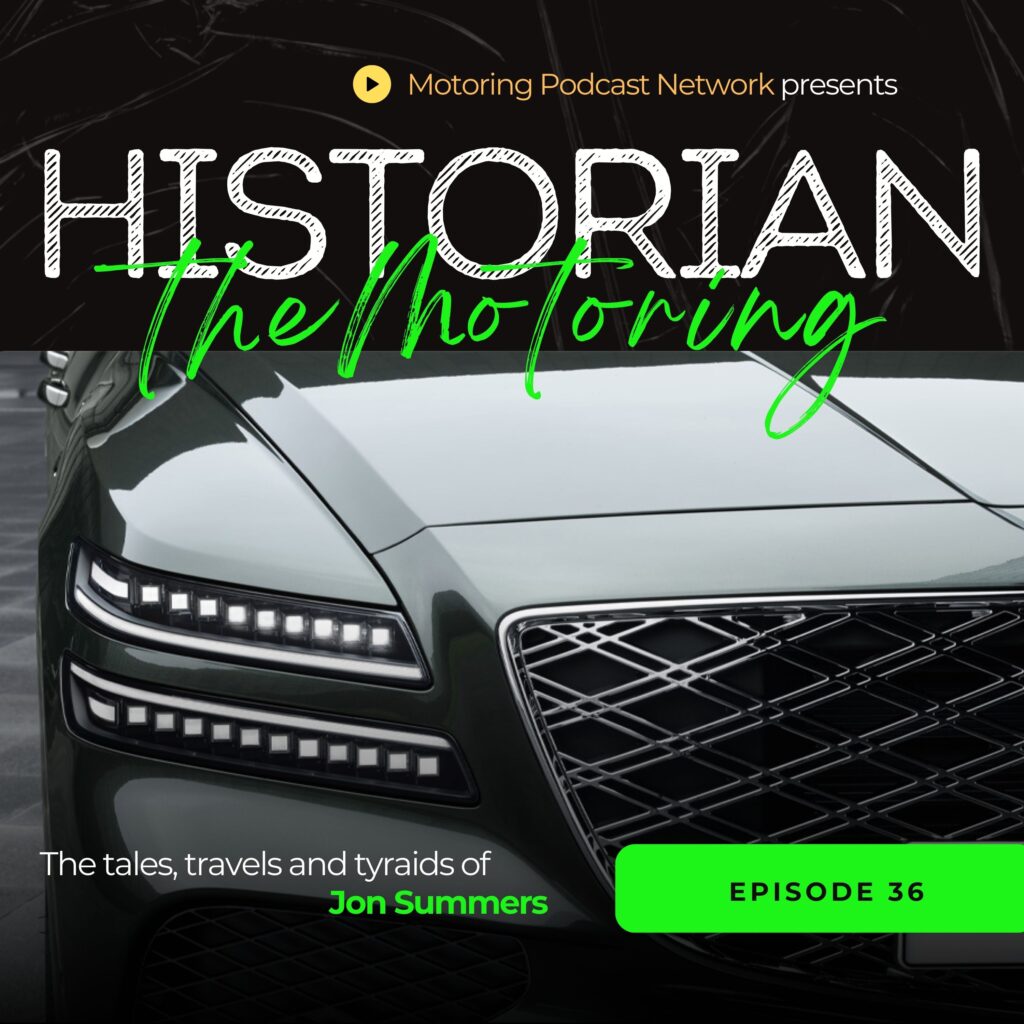
Enjoy more Motoring Historian Podcast Episodes!
The Motoring Historian is produced and sponsored by The Motoring Podcast Network

